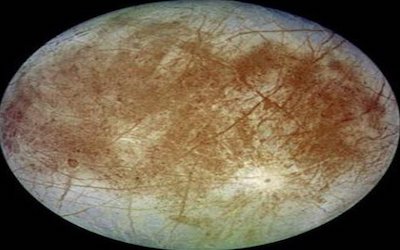PTE考生目前最大的问题之一就是练习题缺乏。除了有限的基本官方书(PLUS,Testbuilder, OG)之外就没有题了。很多英语基础不是很扎实的同学很难找到练习材料。悉尼文波雅思PTE培训学校专门为澳洲,尤其是悉尼、墨尔本的PTE考生准备了适合PTE听力阅读练习的科学60秒。各位PTE同学可以练习PTE听力中的summarise spoken text和PTE口语中的retell lecture,练习记笔记技巧和复述。
听力内容:
60秒科学节目(SSS)是科学美国人网站的一套广播栏目,英文名称:Scientific American – 60 Second Science,节目内容以科学报道为主,节目仅一分钟的时间,主要对当今的科学技术新发展作以简明、通俗的介绍,对于科学的发展如何影响人们的生活环境、健康状况及科学技术,提供了大量简明易懂的阐释。
This is Scientific American — 60-Second Science. I’m Steve Mirsky.
“And this mission would be NASA’s first mission that is directly tasked with searching for signs of life on another world since the Viking Spacecraft were given that task back in the 1970s on the surface of Mars.”
Kevin Hand of NASA’s Jet Propulsion Laboratory.
“We talk about finding, searching for signs of life on some of these
ocean worlds, and in particular these geologically active ocean worlds with rocky seafloors
like Europa.”
Hand spoke February 17th at the annual meeting of the American Association
for the Advancement of Science in Boston. He’s the deputy project scientist for
the Europa mission, which plans to send a lander to the ice-covered moon of Jupiter.
“We’re talking about environments where life could be alive today…so these ice shells may
serve as a window into the oceans below and oceanic material may be coming up to the surface.
Where a mission like a lander could actually sample that material directly…and I’m
the pre-project scientist for this mission. This is a mission that would reach the launch pad
in the 2024–2025 time frame, it would land on Europa’s surface and operate for about
20-plusdays.”
The instrumentation that gets sent to Europa needs to be recognize signs of life in minute
amounts.
“A Pico mole of organics per gram of sample is one key requirement. Being able to detect
cell number abundances to as low of a level as 100 cells per milliliter of ice acquired from
Europa’s surface. We reached that benchmark by comparison to subglacial Lake Vostok here
on Earth. And the size that the microscope in the model payload would need to be able
characterize is down to a 0.2 micron diameter for any putative organisms collected in a
surface sample of Europa. This mission is a bold, very exciting mission that marks
NASA’s return to the direct search for life via in situ capabilities on a potentially inhabited
ocean world beyond Earth.”
Thanks for listening for Scientific American — 60-Second Science Science. I’m Steve Mirsky.
墨尔本悉尼霍巴特文波PTE原创首发
更多精彩请持续关注微信wenbo_tv3。





